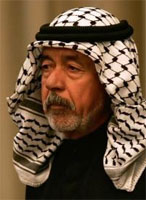23 March 1526 – Antonio Osorio de Acuña
 Don Antonio Osorio de Acuña proved the old adage that you can run but you can’t hide.
Don Antonio Osorio de Acuña proved the old adage that you can run but you can’t hide.
The Spanish priest led a less than godly life according to reports. As a man of the cloth, you may be surprised to read that he got embroiled in the 1519 Spanish Civil War, when the people tried to rise up against the monarchy. He didn’t do it because he believed in his people’s cause. No, he did it because he sensed he could do very well out of it.
Sinner
His greed and ambition motivated him to lead a force comprising men of the cloth, and he was famed for his battle cry ‘Follow me, my parson’. He proved prolific on the battle field, but, as a man of God, despite breaking one of the 10 Commandments again and again, he would still give benediction before slaying his intended victims.
De Acuña never lost sight of his ultimate goal though, and when he heard that Toledo was overrun with Royalists, he quickly swooped, not to come to Toledo’s aid, but to nab the vacant archbishopric for himself. He got the support of the people, but his fellow priests failed to elect him so he slammed them in jail, giving them no more than bread and water until they acquiesced.
Sanctuary
But he needn’t have bothered. The Royalists won and the bishops who’d fought against them had to flee for their lives. He retired to the sanctuary of Navarre in France, where there was no escape – he was recognised and hauled back to Spain. De Acuña was incarcerated in Valladolid, central Spain for a time, but his crimes didn’t stop there. He smashed a brick over the head of one of his captors and tried to escape. However, de Acuña was caught in the act and this time justice was swift. The pope stripped of his robes, rendering him a mere lay person – and at the mercy of the laws of the land.
However, there was no mercy for our Mr de Acuña. He was found guilty of multiple crimes and beheaded right there in prison.
 The US army’s so-called King of Spades, ‘Chemical’ Ali Hassan al-Majid, was finally hanged this morning after a stay of execution that lasted several months.
The US army’s so-called King of Spades, ‘Chemical’ Ali Hassan al-Majid, was finally hanged this morning after a stay of execution that lasted several months.
Convicted in June 2007 for his role at the helm of the al-Anfal (or spoils of war) campaign during the late 1980s, al-Majid was originally sentenced to die in October 2007. However, legal complications meant it would take until the end of February 2008 before the death warrant was finally signed by the Iraqi government.
A family affair
Al-Majid knew he only had weeks to live and would shortly be following his cousin, Saddam Hussein, to the gallows.
The genocide for which he was found guilty resulted in the deaths of tens of thousands of Iraqi Kurds and he earned his nickname for the chemical weapons he used against them.
Early Ba’ath
A leading figure of the Ba’ath Party as the Iran/Iraq war was drawing to an unstable end, al-Majid was responsible for the ruthless attacks on the Kurdish population in the north of Iraq.
As the rebellious resistance continued, he ordered that entire villages were to be destroyed and the residents were either killed or deported to southern Iraq, as their homes were torn down and their livestock slaughtered.
Hit and miss
Although he was originally thought to have been killed during a US air strike on the southern Iraqi port city of Basra in April 2003, al-Majid actually survived and wasn’t captured until August of the same year.
At his trial, although he was charged with genocide and crimes against humanity, he refused to enter a plea, so the court entered one of ‘not guilty’ on his behalf. It seems like they made the right call too, as he went on to refuse to admit he’d done anything wrong throughout the proceedings.
In the end, al-Majid was given five death sentences for his crimes along with lengthy prison terms for a string of other atrocities…that he never got to serve.
He died today, aged 67.
Bookmark this site
del.icio.us | digg | facebook | reddit | StumbleUpon
Leave a comment